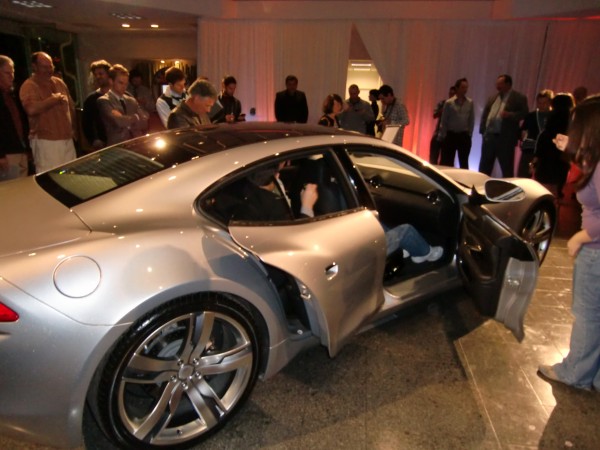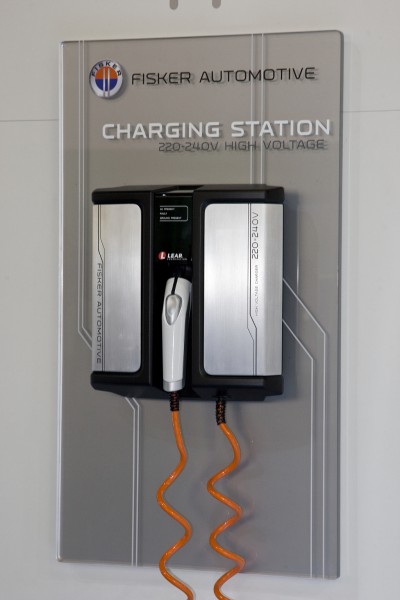For many weeks now the Fisker Karma has been slowly coming out of production. Those cars have been secretly given out to the press for their initial reviews and impressions. We’ll start seeing more of these over the coming weeks. Here are some examples of the quotes you’ll find from your favorite outlets.
“The double-wishbone suspension with its forged aluminum arms and self-leveling rear dampers puts the Karma near the top of the sporty premium four-door class in terms of handling characteristics.”
“Interior finish and materials quality are exceptional for this class and there is no cabin more ecologically conceived as this.”
“Whew – Hollywood Can Finally Park its Priuses”
“Quite frankly, the electric car’s scotch-taped-glasses image has waited a century for a guy like Henrik Fisker to come along. His Karma is a jaw-slackening design manifesto from its fangy grill to its turbulent tail.”
“The Karma’s digital instrumentation and 10.2-in. touch-screen are exemplary in clarity and function.”
“It’s extremely well balanced and, to me, more nimble than either a BMW 7 Series or Porsche Panamera—meant as high praise”
“ Indeed the Karma is genuinely lithe, taut, tossable and fun. It’s also plenty quick, whether in Stealth or Sport mode.”
“Three years and a billion investment dollars after the Fisker Karma rolled forth as a stunning plug-in-hybrid concept, it’s finally ready to rock as a stunning production car. All in less time (and for far less money) than GM needed to produce the Chevy Volt. “
“The Karma’s steering is endowed with real road feel and linear turn-in response. The ride is supple, and there’s minimal body roll when you fling the wheel”
“ Considering its low-slung and curvaceous flanks, the Karma provides surprisingly easy entry and cozy accommodations for four grown-ups.”
“Trim is a cut or two above the $100,000 norm, thanks to fine detailing and lovely custom touches.”
“Some of those who’ve plunked down the cash are doubtless atoning for past turbo-V-8 sins, but others may be less altruistic, simply drawn to the sexiest fenders ever draped over an American sedan. Whatever their motivation, they’ll get a beautiful, luxurious machine that goes easy on the guilt.”
“The car is extremely swift. The Karma has excellent electro-hydraulic steering and an understeer-free chassis that seems to thrive on tight cornering. The car is a joy to drive on a tight handling course”
“Overall, the Karma is an exciting, rewarding but entirely predictable car.”
“The Karma has several vital factors in its favour, not least its stop-the-traffic looks, its thorough engineering, its great driving characteristics and a price that, while high, doesn’t look unrealistic against the competition”
“It could easily become the next must-have automobile among Hollywood’s glitterati.”
“the most important car of the year. And for multiple reasons.”
“It’s a $97,000 car with a $97,000 window sticker. The technology is merely a bonus.”


